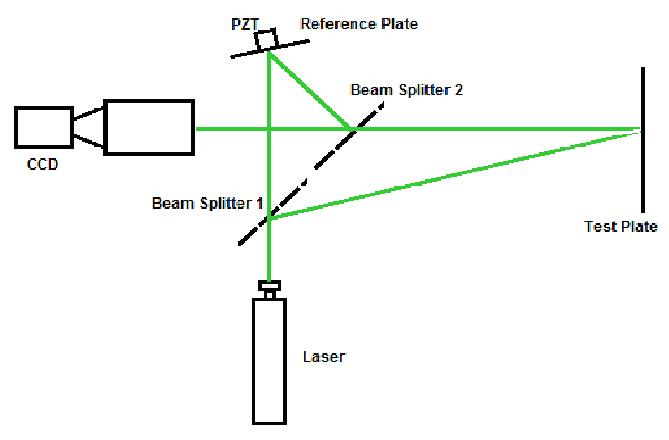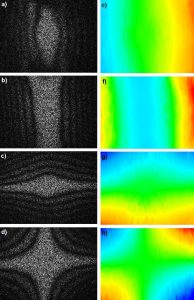|
Supervisor: Gary S. Schajer Renewable Resources Laboratory |
 |
Background
Vibration measurement is an important tool in engineering design. The mode shapes that correspond to the various natural frequencies provide insight into the behavior of a vibrating object and can further be used to identify the potential sources of irregularities or failures. The classical way to visualize vibration mode shapes is the Chladni method, which involves sprinkling fine powder on the surface of a plate when vibrating at a given resonant frequency and then observing the pattern that forms as the powder collects along the nodal lines of the vibration mode shape. This method works well, but is limited to resonant vibration of horizontal surfaces. It gives only qualitative results and the powder usage can be messy.
An alternative approach is developed here using Electronic Speckle Pattern Interferometry (ESPI). The objective is to devise a full-field vibration mode shape measurement method that is quantitative, both in magnitude and sign, and that can make measurements without requiring resonant vibration. The developed method uses a high-speed camera to capture a sequence of ESPI images, from which surface displacements of the vibrating plate surface are computed. While measurements of dynamic surfaces have previously been problematic with ESPI measurements because of the need for multiple phase stepped images, a new image analysis method has been developed that eliminates the need for phase stepping while the plate is vibrating. From these ESPI images, displacement versus time data can be acquired throughout the measured surface and can be used to perform a modal analysis. This use of ESPI with subsequent Fourier analysis of the optical data provides simultaneous measurements of the resonant frequencies and their respective mode shapes.
Research ApproachA high-speed camera running at 400fps was set up in a Michelson interferometer as shown in the diagram above. The test object was a centrally supported rectangular plate 170x100x1 mm. An initial stepped set of reference ESPI images were taken. Then, the plate was gently tapped with a pencil to initiate small vibrations and a set of 512 ESPI images was collected at 400fps, without further phase stepping. Analysis of these images using the new image analysis method gave the phase maps for each image. Fourier analysis of these images gave the natural frequencies of the plate, and further modal analysis gave the corresponding mode shapes. Diagrams (e-h) show the results. For comparison, diagrams (a-d) show the corresponding results from the conventional time-average ESPI method. The new results are attractive because they are quantitative at every point, including sign, while the time-average results are qualitative only, similar to the Chladni method. For example, time-average images (a) and (b) show somewhat similar mode shape diagrams, but the new diagrams (e) and (f) show that the first mode shape have left and right edges vibrating out-of-phase, while for the second mode they are in-phase. |
 |
Significance
- Vibration mode shapes can be measured quantitatively without requiring resonant excitation. The new technique allows great flexibility in measurement conditions and enables excitation to be provided simply by gentle impact.
- The method is quantitative, providing vibration size and sign at every point within the measured images.
- All vibration mode shapes within the range of half the frame rate of the camera can be identified simultaneously. Modern high-speed cameras can run at very high speeds, so the available frequency measurement range is very large.

